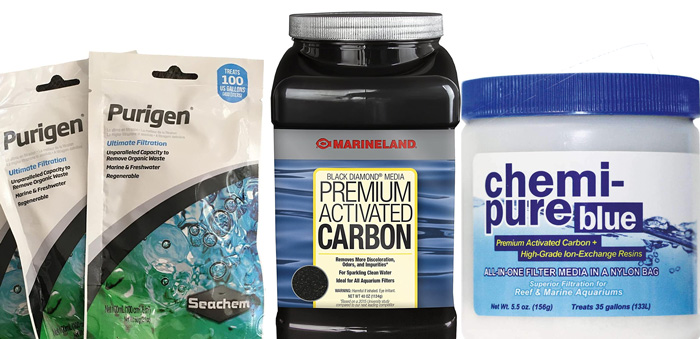An essential part of the filtration system of your aquarium is the filter media. This part of the filtration system will be responsible for separating solids from the fluids by letting the fluids pass through the medium to become a filtrate. Three different filter media are popular among hobbyists: purigen, carbon, and chemipure.
But what are the differences between the three filter media? This article will differentiate purigen vs carbon vs chemipure in an effort to know their upsides and downsides so that every aquarium owner can carefully choose the right one for their fish tank.
| Feature | Purigen | Carbon | Chemipure |
| Set Up | Easy | Easy | Hard |
| Effectiveness | Effective | Effective | Effective |
| Maintenance | Needs Replacement After a Few Months But Can Be Generated and be Use Gain | Needs Replacement Once a Month | One Time Used |
| How It Works | Removes Nitrogenous Wastes | Remove Organic and Inorganic Materials | Controls Phosphate Levels |
Contents
Set Up
The first factor that can differentiate between purigen, chemipure, and carbon is the process of setting up these filter media. If you compare purigen vs chemipure, purigen has the reputation of being able to adapt to any type of filter, which makes this filter media easy to set up. The amount of purigen to be used will all depend on the tank size and the bioload it generates.
Meanwhile, chemipure comes with a nylon bag placed in a sealed container. Unfortunately, the bag is tied very tight, making it challenging to take the bag out of the container. To use chemicure, you must rinse it with tap water before putting it in the filter. If it is installed already, ensure the water will pass through while leaving back with an excellent flow.
On the other hand, carbon is also easy to set up, especially if you are making your activated carbon. All you have to do is buy a loose activated carbon and use a reusable media bag that fits in the filter. Put the carbon in the bag before putting it in the filter but make sure that the filter is thoroughly clean before placing the bag.
Effectiveness
All of these filtration media bring some positive effects to the aquarium, but their effectiveness usually differs from one another. Purigen will eliminate nitrogenous waste while removing discolorations from the water to make it clearer.
In comparing the effectiveness between purigen vs carbon, carbon will effectively block water filters, especially in filtering out all contaminants. Whether a small contaminant or a larger particle, carbon can help remove all the contaminants from the water.
Chemipure also works well in both fresh and saltwater aquariums. A 5 oz bag of chemipure is enough to filter a 20-gallon fish tank. But you need to ensure that the amount is exact because if you put too much, the tank will be deprived of fewer nutrients.
Maintenance
Maintenance requirements vary among these three filter media. When using purigen, it is likely that this media will work for a few months. If your tank is heavily populated, it can work for a couple of months, but replace it afterwards. Regenerating purigen is allowed but is complicated to do.
Meanwhile, chemipure can only be used once in the aquarium. It is different from purigen, which can be used repeatedly if you want to regenerate it. The life expectancy of chemipure is about two to four months, but the lifespan will be shorter if you have a populated fish tank.
On the other hand, carbon filters will last longer depending on the aquarium. Always remember that if your aquarium water is dirty, the carbon will need a replacement frequently. If your aquarium is cleaned and maintained, you will only need to replace the activated carbon once a month.
How It Works
Another difference in these three filter media is how they work in the fish tank. Purigen removes nitrogenous waste by making a synthetic, porous, and absorptive polymer which removes all the organic wastes that may release harmful ammonia compounds. Purigen should be the last one that the water passes before the water goes to the tank.
Meanwhile, chemipure works by halting heavy metals, phosphates, silicates, and other nitrogenous compounds. It will help in controlling the phosphate levels and works best when used along with a carbon filter.
On the other hand, carbon is used as a chemical filtration media, which helps remove organic and inorganic materials dissolved in your fish tank’s water. Using the carbon filter will keep the water clear while removing the unpleasant odor.
Activated carbons will dissolve a number of contaminants such as tannins, chlorine, and chloramine. It will also help prevent the aquarium water from turning yellowish over time while helping make it crystal clear.
Conclusion
Filtration is an essential part of the maintenance of your fish tank. Knowing the difference between purigen vs carbon vs chemipure will allow you which one is better for your fish tank. These three will work nicely in your aquarium in removing unwanted materials in the water but choosing which is the one will all depend on your preference.

